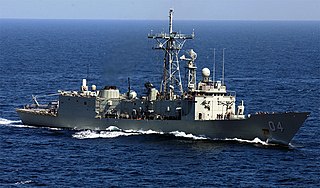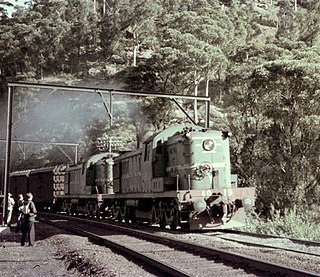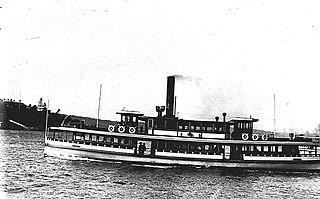
The Sydney Opera House is a multi-venue performing arts centre in Sydney. Located on the banks of Sydney Harbour, it is widely regarded as one of the world's most famous and distinctive buildings and a masterpiece of 20th century architecture.
Bruce Kenneth Farr is a New Zealand designer of racing and cruising yachts. Farr‑designed boats have won, challenged for, or placed highly in the Whitbread Round the World Race, America's Cup, and Sydney to Hobart Yacht Race, among others.

A maxi yacht usually refers to a racing yacht of at least 21 metres (70 ft) in length.

A light aircraft carrier, or light fleet carrier, is an aircraft carrier that is smaller than the standard carriers of a navy. The precise definition of the type varies by country; light carriers typically have a complement of aircraft only one-half to two-thirds the size of a full-sized fleet carrier. A light carrier was similar in concept to an escort carrier in most respects, however light carriers were intended for higher speeds to be deployed alongside fleet carriers, while escort carriers usually defended convoys and provided air support during amphibious operations.

The C38 class was a class of steam locomotive built for the New South Wales Government Railways in Australia.

The Leander class was a class of eight light cruisers built for the Royal Navy in the early 1930s that saw service in World War II. They were named after mythological figures, and all ships were commissioned between 1933 and 1936. The three ships of the second group were sold to the Royal Australian Navy (RAN) before World War II and renamed after Australian cities.

The Fletcher class was a class of destroyers built by the United States during World War II. The class was designed in 1939, as a result of dissatisfaction with the earlier destroyer leader types of the Porter and Somers classes. Some went on to serve during the Korean War and into the Vietnam War.

RMS Aquitania was a British ocean liner of the Cunard Line in service from 1914 to 1950. She was designed by Leonard Peskett and built by John Brown & Company in Clydebank, Scotland. She was launched on 21 April 1913 and sailed on her maiden voyage from Liverpool to New York on 30 May 1914. Aquitania was the third in Cunard Line's grand trio of express liners, preceded by RMS Mauretania and RMS Lusitania, and was the last surviving four-funnelled ocean liner. Shortly after Aquitania entered service, World War I broke out, during which she was first converted into an auxiliary cruiser before being used as a troop transport and a hospital ship, notably as part of the Dardanelles Campaign.

The Westlink M7 or M7 Motorway, formerly Western Sydney Orbital, is a tolled urban motorway in Sydney and is a part of the Sydney Orbital Network. Owned by the NorthWestern Roads (NWR) Group, it connects three motorways: M5 South-West Motorway at Prestons, M4 Western Motorway at Eastern Creek and M2 Hills Motorway at Baulkham Hills. It opened on 16 December 2005, eight months ahead of schedule.

Marc Andrew Newson CBE is an industrial designer who works in aircraft cabin design, product design, furniture design, jewellery, and clothing. His style uses smooth geometric lines, translucency, strength, transparency, and tends to have an absence of sharp edges.

The Adelaide class was a ship class of six guided missile frigates constructed in Australia and the United States of America for service in the Royal Australian Navy. The class was based on the United States Navy's Oliver Hazard Perry-class frigates, but modified for Australian requirements. The first four vessels were built in the United States, with the final two being constructed in Australia.

The River class was a class of six destroyer escorts operated by the Royal Australian Navy (RAN). Plans to acquire four vessels, based on the British Type 12M frigate, began in the 1950s. The first two vessels had some slight modifications to the design, while the next two underwent further changes. Two more ships were ordered in 1964, following the Melbourne-Voyager collision; these were based on the Type 12I frigate.

The 18 ft Skiff is considered the fastest class of sailing skiffs. The class has a long history beginning with races on Sydney Harbour, Australia in 1892 and later in New Zealand. The boat has changed significantly since the early days, bringing in new technology as it became available. Because of the need of strength, agility and skill, the class is considered to be the top level of small boat sailing. Worldwide this boat is called the "18 Foot Skiff". It is the fastest conventional non-foiling monohull on the yardstick rating, with a score of 675, coming only third after the Tornado and Inter 20.

Commonwealth Engineering was an Australian engineering company that designed and built railway locomotives, rolling stock and trams.

The 40 class were a class of diesel locomotives built by Montreal Locomotive Works, Canada for the New South Wales Department of Railways in 1951/52.
Sydney Ferries Limited operated ferry services on Sydney Harbour from 1900 until June 1951.

Lady Denman is a former Sydney Harbour ferry built in 1912 for the Balmain New Ferry Company. She was later run by Sydney Ferries Limited and its government successors. She is now preserved at the Jervis Bay Maritime Museum near her original build site in Huskisson, New South Wales, Australia.
HMCS Melville was a Bangor-class minesweeper built for the Royal Canadian Navy in 1940. The first diesel-engined Bangor-class vessel, Melville served in the Battle of the Atlantic during the Second World War. After the war, she was transferred to the Royal Canadian Mounted Police (RCMP) under the same name and served until being broken up in 1961.

32-36 and 38-40 Gloucester Street facades, The Rocks is a heritage-listed former residence located at 32-36 and 38-40 Gloucester Street, in the inner city Sydney suburb of The Rocks in the City of Sydney local government area of New South Wales, Australia. It was built during 1885. It is also known as part of development known as 40 Gloucester Street. The property is owned by Property NSW, an agency of the Government of New South Wales. It was added to the New South Wales State Heritage Register on 10 May 2002.

Kaludah was a K-class ferry on Sydney Harbour, Australia. Commissioned in 1909, the timber-hulled steamer was built for Sydney Ferries Limited during the boom in cross-harbour ferry travel prior to the 1932 opening of the Sydney Harbour Bridge. Like the other "K-class" ferries, she was double-deck, double-ended, steam-powered screw ferry. However, she and the larger but otherwise similar Kookooburra (1907), were the only two K-class ferries designed by naval architect Walter Reeks and not Sydney Ferries Limited's Captain Summerbell.
















